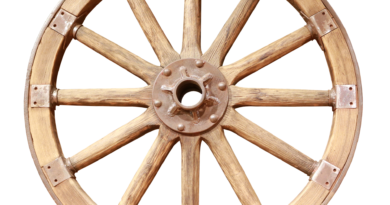Why Do People Buy Put Options?
Puts, along with calls, are one of the two types of options derivative of an underlying stock. It gives the owner the right to sell a stock at a strike price before its expiration date expires. But, why do people buy Puts anyway? They are purchased for speculation and hedging purposes, like calls. Unlike calls, puts increase in value when the stock goes down. If you are having trouble understanding some of the terms used in this article, check out our glossary.
Reasons To Buy Puts
Speculative Trading
Puts, in a speculative trading context, are used to speculate that a stock will go down instead of up. calls are used for the opposite. The puts are used as an alternative to shorting an underlying stock. Shorting a stock is when traders borrow stock and immediately sells it with the expectation that the value of the borrowed stock will go down. This means that, if the stock does go down, the traders will have profit left when they buy the stock back to return it to who they borrowed it from.
The main reason that traders use puts rather than short selling to speculate is the risk. Short selling has unlimited risk because there is no limit to how much a stock could increase in value. On the other hand, you only risk losing what you paid for it when buying a put. Another reason traders choose puts is that they can’t, for one reason or another, borrow the amount of stock they wanted. This may be due to the company not having enough stock to loan out.
A third reason is that the put provides leverage. This means that it has potential for a higher percentage gain for a lower initial cost. You would think the initial cost of shorting stock would be zero, but it usually requires some collateral (sometimes as much as 50%) to borrow the stock. Combine this with the lower risk, puts are usually the more recommended option for beginners over short selling stock.
Hedging
Puts are also commonly used to hedge bets for traders. Hedging refers to a technique used to minimize or eliminate risk from an investment. It may decrease risk, but it also decreases profit. Puts used to hedge bets are often called protective or married puts. These puts provide protection for when a stock you invested in falls, sort of like insurance for your investment.
For example, let’s say you bought 100 shares of stock worth $40 per share and a put with a $38 strike price for $1. If the stock lowers to $35 per share, then you would lose $500 (($35-$40)*100) without the put and $300 (($38-$40-$1)*100) with it. This is because the owner of a put can sell stock at the strike price no matter what the underlying stock’s current price is. This put would be considered in-the-money because it is profitable to exercise.
Another way to hedge bets is to diversify your stock. This means that the trader buys multiple different kinds of stock instead of just one kind with the hope that the majority of them will increase in value. Diversification works as a hedge because it is unlikely that all the invested in stocks would go down at once. In fact, if traders diversify correctly, their investments should go up as the market does.
The reasons many traders choose to just buy puts over diversifying their stock portfolio are that it is cheaper and simpler. It is cheaper because puts are cheaper than stocks. This is because they expire, causing them to lose value as the expiration date nears. Buying puts is simpler because it allows a trader to focus on one stock instead of several different stocks that each have their own factors causing them to rise and fall.
Other Reasons
Another reason to buy puts is to sell them again. Options, like stock, can be traded for a profit. The two main factors in determining the value of a put is its expiration date and how in-the-money it is. The expiration date is the date that, after which, a trader can no longer exercise the put. The closer a put gets to this date the less value it has. This is called decaying. The other factor is how profitable exercising the put would be. This profitability is called being in-the-money.
Puts are also bought as replacements for sell limit orders. Sell limit orders are orders to sell a stock at, or above, a specific price. The advantage puts have over sell limit orders are that they give more certainty and control to the owner of the put. It gives more certainty because the owner of the put knows that they can exercise it if it is financially beneficial to do so without having to wait till it is potentially too late. It also gives them the power to not exercise them. This is helpful if the stock is in flux and you want to wait and see where it ends up.
Conclusion
The Main reasons that traders buy puts are for speculative trading and for hedging. When it is used in speculative trading, it’s an alternative for short selling. When used for hedging, it’s an alternative to stock diversification. Puts can also be traded like stock as long as you pay attention to their expiration dates and whether it is in-the-money, or to replace sell limit orders.
I hope this helped you understand why traders buy put options. Have a good day, and happy trading!




